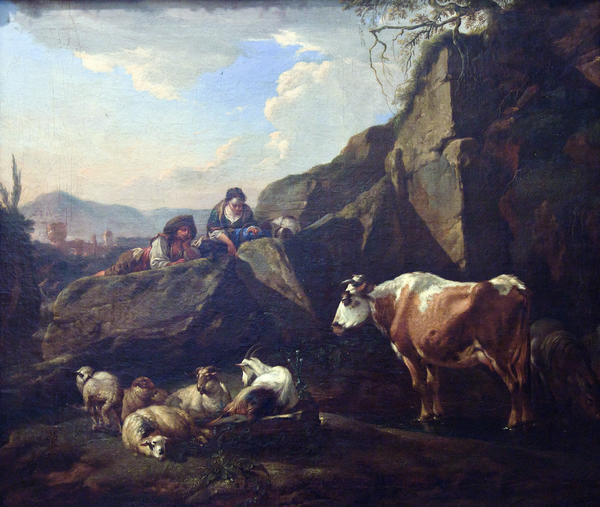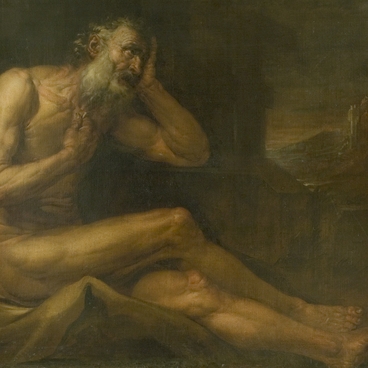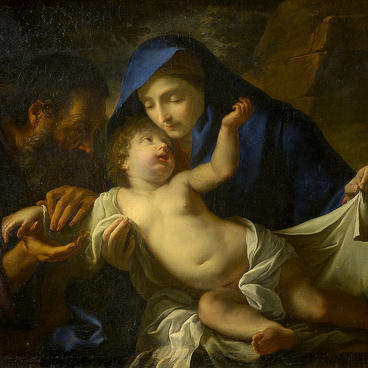Works by Johann Heinrich Roos are hardly attributable to any national school. German by birth, he was a representative of a famous dynasty of artists. His creative style took shape under significant influence of Dutch and Italian art.
Johann Heinrich Roos studied in Amsterdam, Holland, in Willem Dujardin’s workshop. He worked in Italy from 1650 to 1654, and then returned to Germany. From 1657 on, he settled in Frankfurt. From 1664, he served as court painter of the Elector of Palatinate in Heidelberg, then, together with his brother Theodor, he was a portrait painter at the courts of Mainz and Kassel.
The artist worked in many genres, painted landscapes, portraits and religious scenes. His pastoral scenes painted in landscapes with ruins were most appreciated. Herd with Shepherds is a typical example of such a painting. This scene is very picturesque, showing brightly-dressed shepherd and shepherd girl relaxing comfortably on sun-warmed mountainside, by sultry noon. At the foot of the mountain, a herd is resting, and in the distance, ruins of an ancient fortress are seen, with a mountain range as background. Such idyllic pastoral scenes against the background of Italian landscapes were first painted by Dutch artists of the 17th century, who worked in Italy, and soon gained popularity in Europe.
The painting style is sophisticated and multi-layered; its color scheme uses the color values of red soil, shining through the glazing of paints. The coloring is based on contrasts of light and shadow, warm and cold hues. In this painting, the main color value is dark brown, as earth and rocks take up an important place in the composition. To enhance contrasts in the landscape, soft golden lateral lighting was used. Penetrating into the shaded space, it lights up animals’ hair, parts of rocks, etc.
This lighting maintains the painting’s unity of color. Previously, the painting belonged to the collection of the Rumyantsev Museum in Moscow, founded by Count N.P. Rumyantsev (1754–1826), who was a diplomat, historian, and philanthropist. In 1862, the Rumyantsev Museum was merged with the Moscow Public Museum. In 1924, the museum was closed down, and the painting was transferred to the Museum of Fine Arts (now, Pushkin State Museum of Fine Arts). From there, it was transferred to Radishchev Saratov Museum in 1924.



